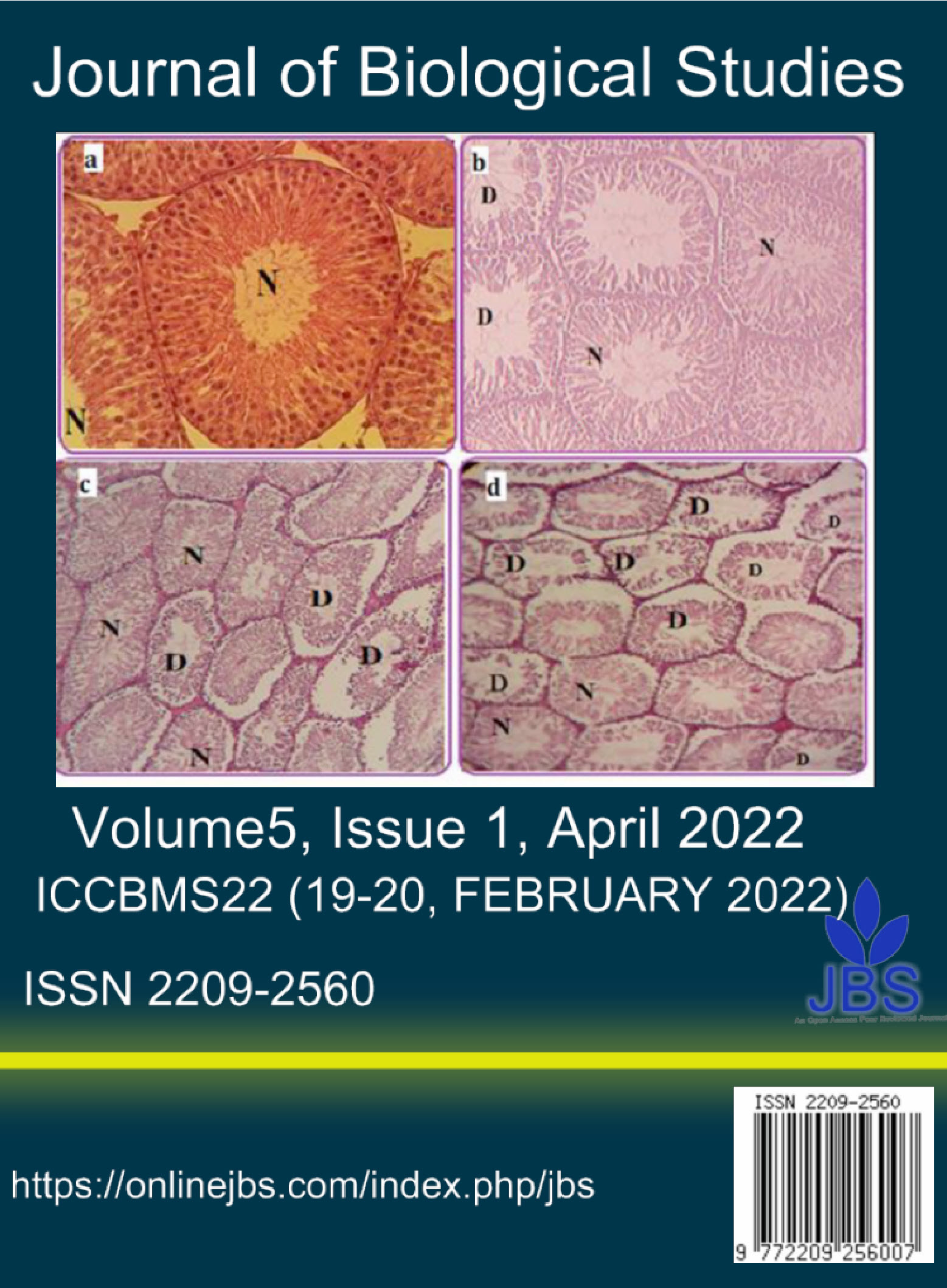The cytotoxic effects of green synthesized AgCl2 nanoparticles on colon cancer (SW480) cells
Main Article Content
Abstract
Nanoparticles are materials having one of the dimensions in the range of 1–100 nm (Hussain et al., 2016). The development of efficient green chemistry methods using plants for synthesis of well-characterized nanoparticles has become a major focus of researchers. Nanoparticles produced by plants are more stable and more various in shape and size (Iravani, 2011). It has been shown that silver nanoparticles (AgNPs) preparation by green synthesis have significant advantages over conventional methods by chemical agents that are toxic to environment (Sharma, et al., 2009). AgNPs have significant place in nanotechnology because of their exceptional biological properties, and hence applications (Rafique et al., 2017). Various plant extracts have been used to synthesize AgNPs (Li et al., 2007; Srikar et al., 2016; Mussin et al., 2021). Although various plant components have been used as potential agents for green synthesis of AgNPs, synthesizing stable and widely applicable AgNPs is a challenge to the researchers (Srikar et al., 2016).
Colon cancer is one of the leading tumors worldwide and the numbers of new cases of colon cancer is increasing rapidly. The incidence and mortality of colon cancer have been increasing during recent years even in the young adults below the age of 50 (Ahmed, 2020). Colon cancer is a neoplasm of an epithelial origin that increases exponentially with age (Jensen, 2019). Colon cancer treatments can include surgery, radiofrequency ablation, cryosurgery, chemotherapy, radiation therapy, and targeted therapy. Newer cytotoxic chemotherapies and novel biologic agents have been investigated to be applied for colon cancer treatment. Despite significant advanced in colon cancer treatment, it still causes considerable morbidity and mortality due to unsuccessful therapy (Segal and Saltz, 2009; Chakrabarti et al., 2020).
Recently AgNPs have gained considerable attention for use in cancer therapy. It has been shown that AgNPs have suppressive effects against colon tumor mediated by cell apoptosis and mitochondrial dysfunction (Gurunathan et al., 2018). AgNPs synthesized from leaf extract of Vitex negundo L. has been reported to have cytotoxic effects of on human colon cancer cell line HCT15 (Prabhu et al., 2013). Green synthesized AgNPs have also anticancer effects on human neonatal skin stromal cells (hSSCs) and colon cancer cells (HT115) in vitro (AlSalhi et al., 2016). In this study we investigated the cytotoxic effects of green synthesized AgCl2 nanoparticles on colon cancer (SW480) cells in vitro. Onopordum acanthium extract was used to synthesize AgCl2 nanoparticles. Onopordum acanthium was applied traditionally as bactericide and antitumor agent (Al-Snafi, 2020). Colon cancer (SW480) cell line was purchased from Pasteur Institute of Iran and cultured growth medium until they reached 80-90% confluence. The cells were then treated with different concentrations (1.5625, 3.125, 6.25, 12.5, 25 and 50 μg/ml) of AgCl2 nanoparticle for 24 hours. MTT assay was used to measure cytotoxicity of AgCl2 nanoparticles against SW480 cells. Cell viability significantly decreased in SW40 cells treated with 6.25, 12.5, 25 and 50 μg/ml of AgCl2 nanoparticle. Our findings indicated that green synthesized AgCl2 nanoparticles have cytotoxic effects against colon cancer (SW480) cells in vitro.
Article Details

This work is licensed under a Creative Commons Attribution 4.0 International License.
